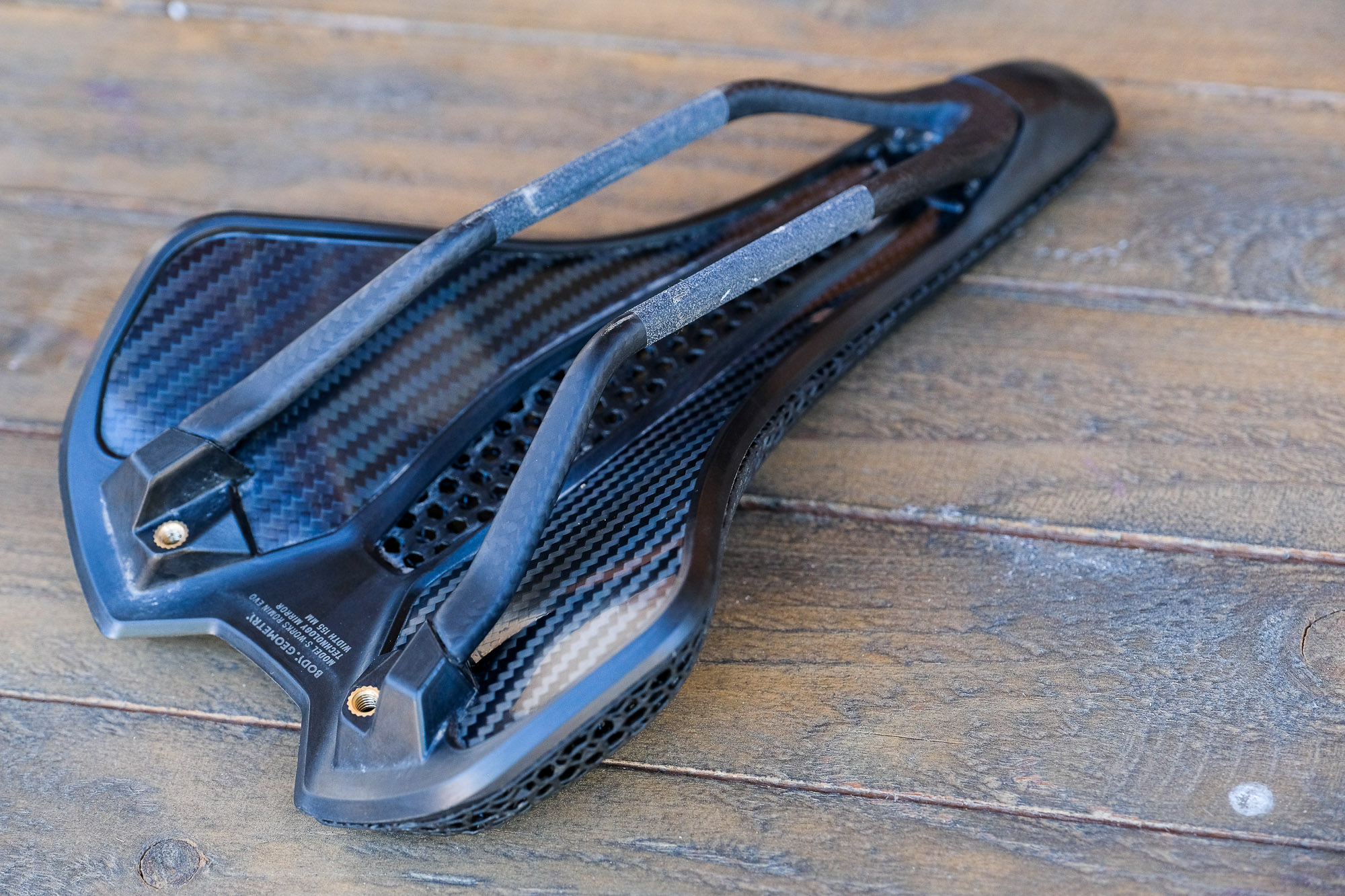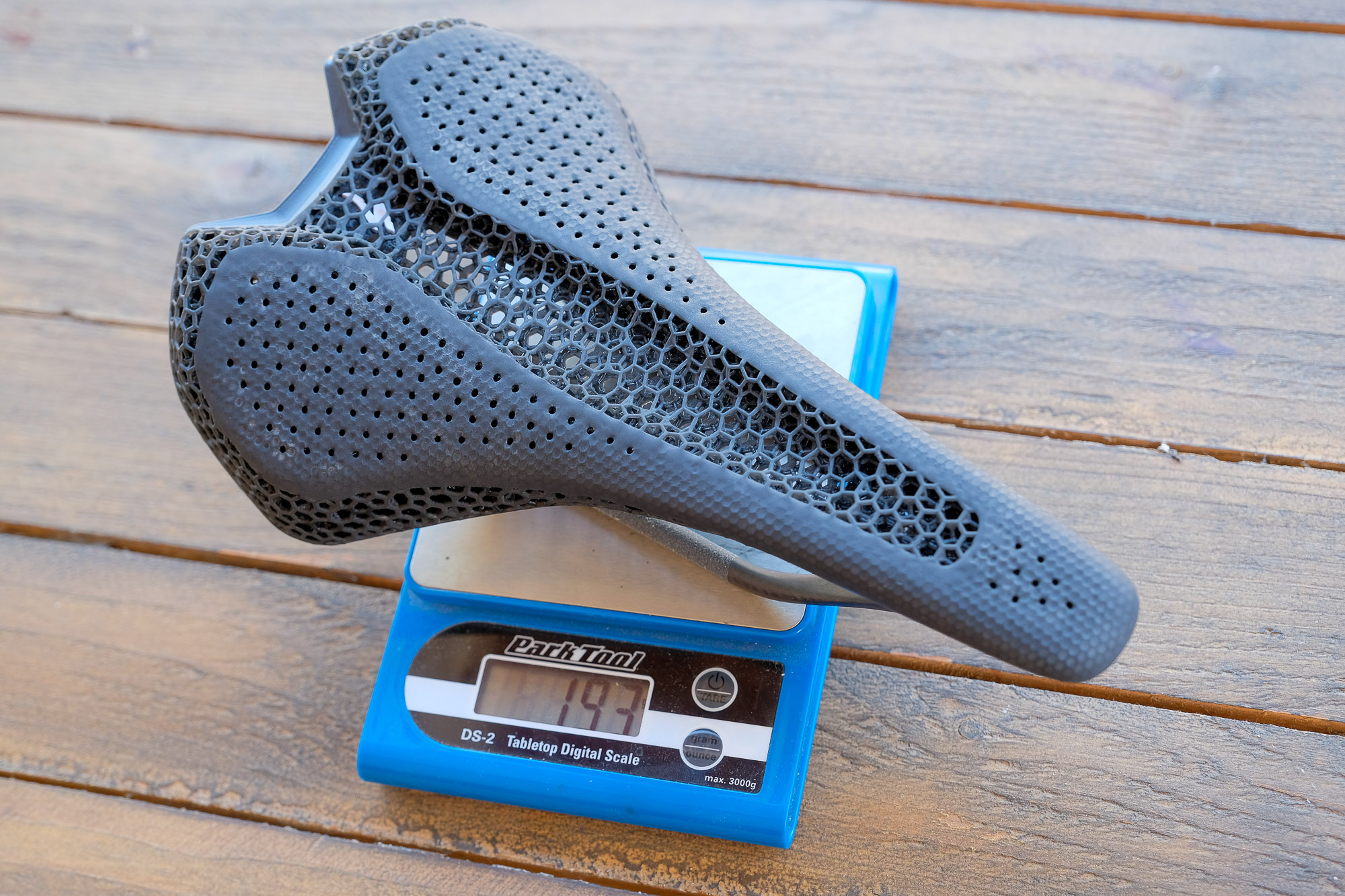Just over a year ago, Specialized launched their first saddle using an additive 3D printed liquid polymer material for the padding, the S-Works Power with Mirror. Well turns out the premium saddle and tech has made its way to the Romin shape as well and we have had it for a few weeks. This technology isn’t new or limited to Specialized as we have also tested the Fizik Antares Versus Evo 00 Adaptive Saddle that launched in September of 2019.
The Romin shape is what we would consider more traditional in length and overall shape. Sure the S-Works badging tells you it’s going to be of the highest grade materials with a price tag to match but the Romin shape has always been a top pick for the RBA staff over the Power. The Mirror technology elevates the saddle’s potential far beyond what is possible with traditional foam.
The Ride
When first inspecting the saddle it is clear just by pressing the Mirror padding that the density or support level changes throughout the saddle. Foam padding has tried to do this for years by adding gel or layering different density foam but nothing is as seamless or dynamic as the 3D printed tech. Just as it was on the Fizik saddle the Romin Evo has a very complex network of voids and connections that Specialized is calling struts and nodes. Specialized is claiming 22,000 struts and 10,700 nodes, almost double that used in their original Power version and further allowing more tuned support.

On the first few rides we noticed how well the saddle felt with no “break-in” needed. We almost forgot we were testing a new saddle because there were so few issues. The one biggest difference we notice with the Mirror version over a regular saddle is it was hard to slide forward or backward on the saddle. We had to raise ourselves up, removing pressure from the saddle to get in a new position, something that we never notice on a regular foam saddle. This isn’t a bad thing just something that took a few rides to adapt to.
This sort of position sustaining hold that the saddle has was also nice when efforts were high. Even when we were pushing the pedals hard we remained in the same position on the saddle, something that we can’t say for most saddles. Don’t get us wrong, the saddle still offers the on-the-nose aggressive position as well as the normal position that you just don’t get with a short Power saddle. The Mirror padding is also nearly solid through the contact area with small perforations, unlike the Fizik which we have had mixed experiences getting dirt or debris in. The carbon shell and rails just help elevate the performance and tuning that the Mirror tech offers.

Overall the experience was good and if you have $450 to spare try it. Like we said in the Fizik review, this is new tech and long-term durability is yet to be seen but we have over two years on the Fizik with no obvious determination. One true upside has been that when wet the saddle doesn’t retain moisture, something that we can’t say about foam. Also, the level of padding and support for this weight is absolutely unmatched.

The Details
- Concave flex-tuned FACT carbon shell
- Oversized 7x9mm FACT carbon rails
- 26cm long
- 143mm and 155mm width options
- 190 grams (143mm width) 193 grams (155mm width)
- 3D printing from a liquid polymer
- Claimed 22,000 struts and 10,700 nodes in the structure
Price: $450
specialized.com







Comments are closed.